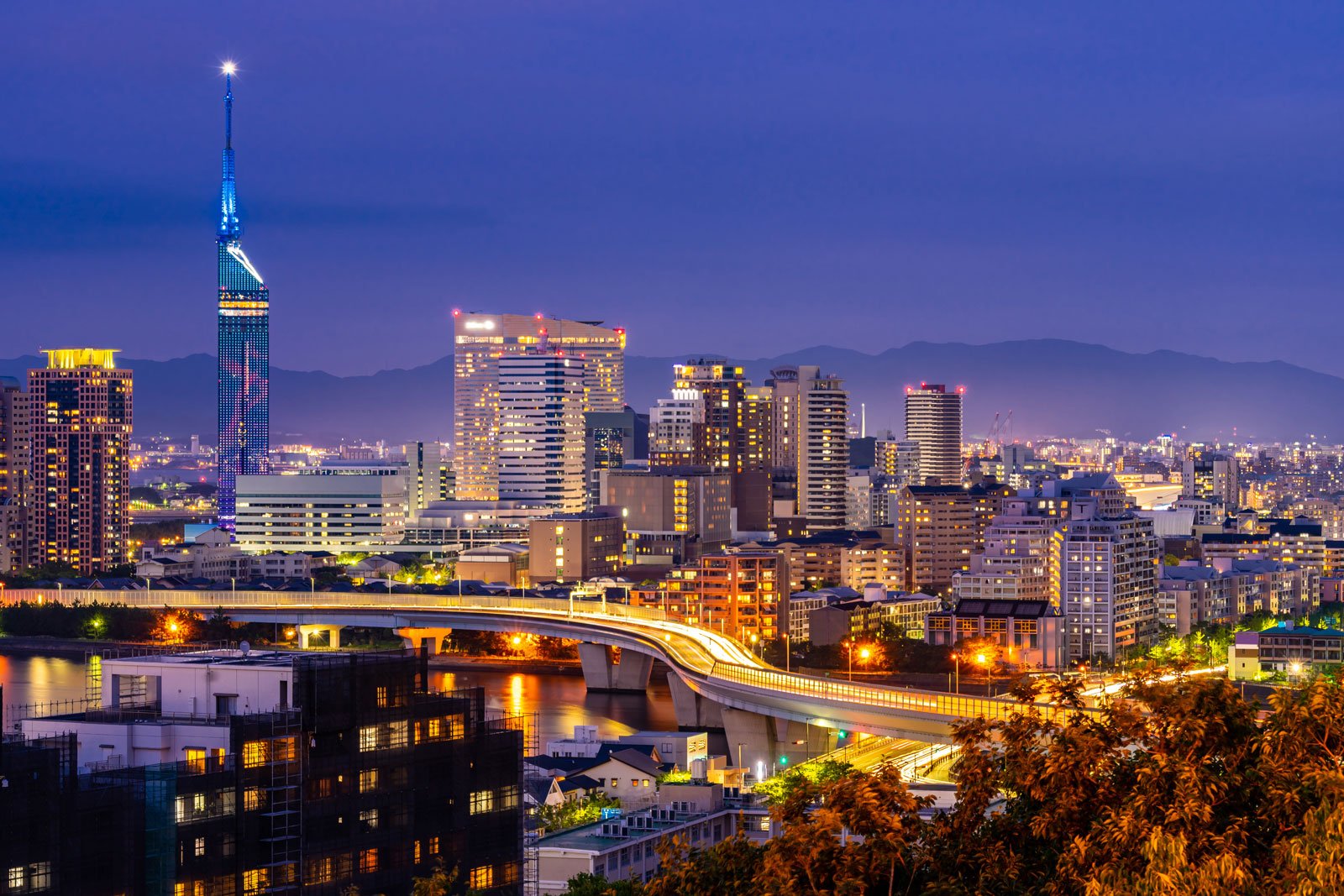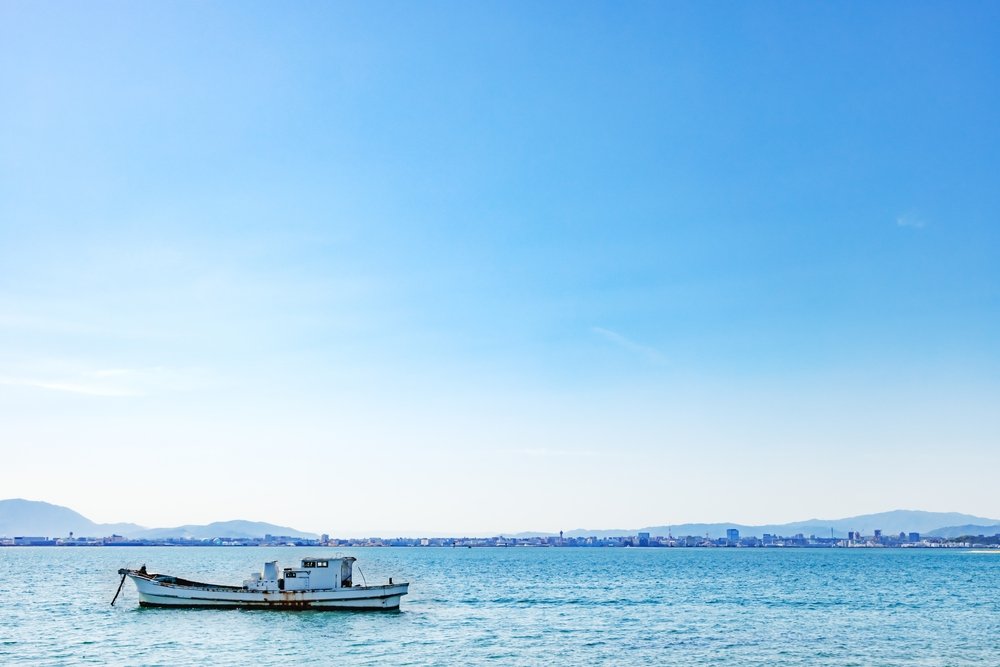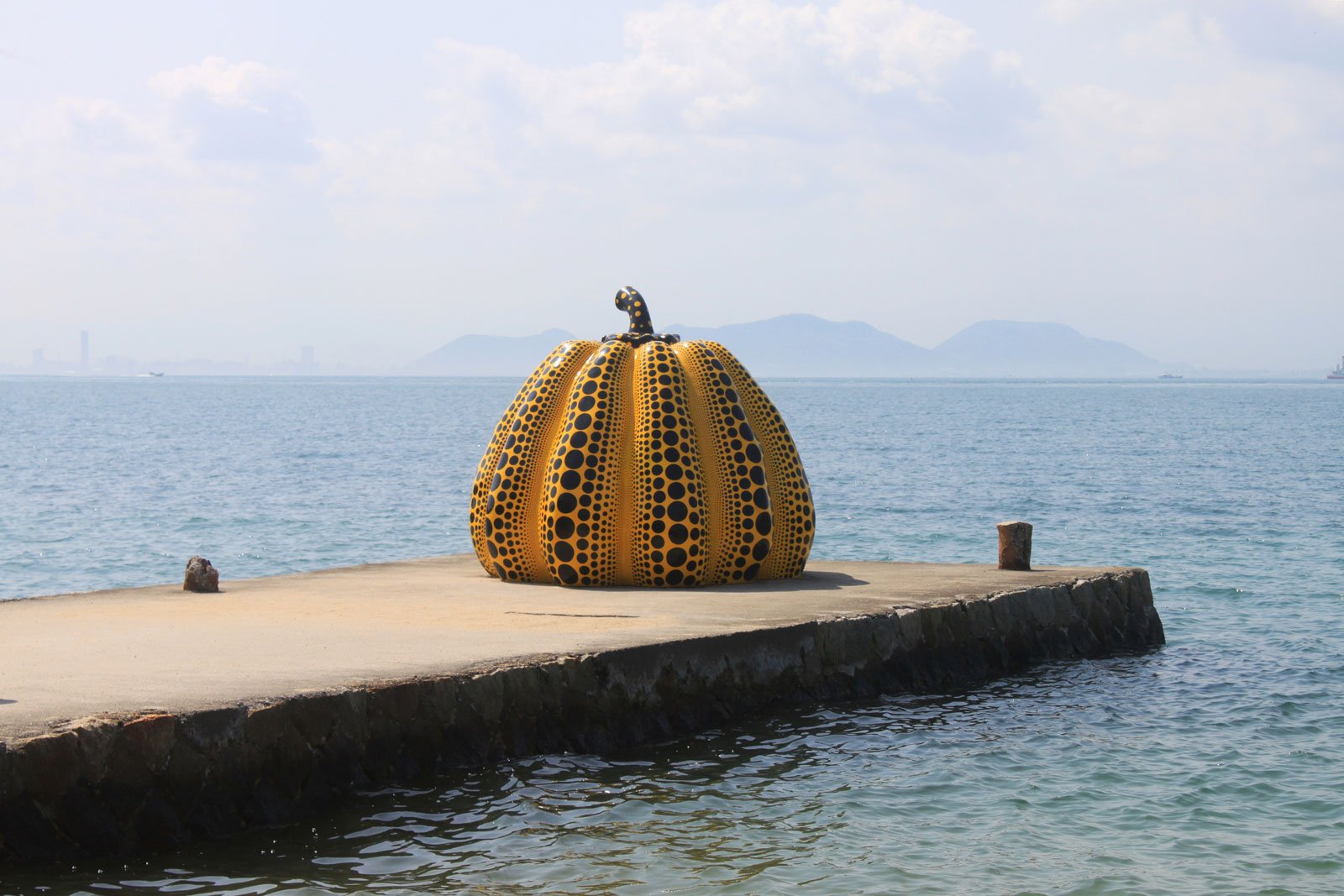
GUIDE TO FUKUOKA
Limelight Arts Travel Staff
04 July 2023
Fukuoka, in northern Kyushu, is one of Japan’s most important ‘second cities’, with a burgeoning population, a reputation as the country’s new start-up capital, and a lively culture that is the result of millennia of contact with mainland Asia, particularly Korea. Throw in one of Japan’s most highly-regarded street food cultures and some of the country’s oldest shrines and temples, and you have a compelling cultural destination.
Just over 200 kilometres separate Fukuoka from Busan, Korea, and many scholars see it as one of the arrival points for humans in the archipelago. While much of Japan’s ancient history is highly debated, it’s indisputable that Fukuoka was a pre-eminent location for foreign trade, diplomacy and movement of people, as far back as written histories stretch.
Its location on Hakata Bay ensures that Fukuoka enjoys only the freshest seafood
FUKUOKA & JAPAN’s relationship WITH asia
Fukuoka is located in the sweep of Hakata Bay, the location for one of Japan’s most significant historical events. In 1274, a divine wind (kamikaze) swept up a typhoon here and sank a large fleet of Mongol troops. They were seeking to defeat the Japanese emperor, who had refused to acknowledge Kublai Khan as overlord, and his people. Amazingly, encountering one typhoon was not enough and when the Mongols returned seven years later, they met a second devastating kamikaze. They did not return.
For centuries, successive Japanese governments debated how to deal with foreign invasion and influence. By the seventeenth century, the strategy was isolation, but from the seventh to the tenth centuries one prong of defence was diplomacy, and Japan’s major administrative capital for international relations was based mere kilometres from present-day Fukuoka.
Dazaifu was the seat of the imperial office that ruled the region of Kyushu, but it’s best remembered as the place where foreign relations were strategized and administered. Ambassadors from China and Korea were accommodated here, sometimes on their way to Kyoto to meet with high-ranking imperial officials, and Dazaifu’s guest house, or kōrokan, was even celebrated for its beauty in contemporary poetry. Today, only the vast ruins of foundations survive.
By the tenth century, Dazaifu – and Kyushu in general – was considered too far from the power, glory and cultural refinement of imperial Kyoto, with a posting there considered a serious demotion. Sugawara no Michizane, a celebrated scholar, poet and statesman, bore his exile here patiently after he fell foul of factional powers, and Dazaifu Tenmangu, one of Fukuoka’s most important cultural attractions, is now a Shinto shrine commemorating his long cultural significance. Particularly honoured by students with upcoming exams, the poet was so beloved in his own time that a Kyoto plum tree even flew itself to Dazaifu to accompany him in his solitude.
Ryan Gander’s Really shiny stuff that doesn’t mean anything (2011), in the austere surrounds of Dazaifu Tenmangu (photo: Kathleen Olive)
This tobiume, or “flying plum”, is one of the chief beauties at Dazaifu Tenmangu, along with a a heritage-listed sixteenth-century central shrine hall and a traditional garden designed to evoke the Japanese character for ‘heart’. The complex has a wonderful collection of traditional art forms, particularly calligraphy and painted screens, but it has also embraced contemporary art. Dotted around the complex is a collection of commissioned works that reflect Sugawara’s scholarly moral code. These include Ryan Gander’s Really shiny stuff that doesn’t mean anything (2011), a large round sculpture made up of a thousand random metallic objects.
Connected to the shrine by a moving walkway that burrows deep into a wood-covered hill, the Kyushu National Museum is similarly contemporary. The first new national museum to be built in Japan in over a century – joining the eminent but historic collections in Tokyo and Kyoto – this striking glass building has been designed to nestle into the surrounding hills.
Its collections are excellent and broad, from ancient Jomon-era sculptures to historic artworks from China and Korea, with a particular focus on how Japan’s culture has been formed in the context of Asia at large. Unusually for Japan, the large building accommodates an on-site conservation centre, serving as a kind of clearing-house for conservation and restoration of major artworks in this and neighbouring regions.
The comprehensive Kyushu National Museum (photo: Moon Angel, Flickr, CC by SA 2.0)
ART, GARDENS & ZEN TEMPLES
Fukuoka definitely has a modern feel overall: like so many Japanese cities, it was firebombed during World War II and therefore some of its principal cultural attractions are today housed in new buildings.
Fukuoka Art Museum, for example, is located west of Tenjin, in a low building that doesn’t detract from the extensive landscaping of the Ohori Park gardens around it. A bright spotted pumpkin by Yayoi Kusama greets visitors as they arrive, and the collection inside stretches from priceless seventeenth-century ceramics to works by Salvador Dalí, Joan Miró and Marc Chagall.
Outside, Ohori Park takes its name – and its location – from the moat of the now-ruined Fukuoka Castle. Constructed in the 1920s, it explicitly borrows a classical Chinese style, but in its midst a large garden has been set aside to demonstrate all the major epochs of Japanese garden design, from dry landscape gardens to tea houses. A small shrine nearby includes a central hall covered in gold.
This couldn’t be further from the rustic wabi-sabi aesthetics of Shofuku-ji. This sprawling complex includes the first Zen temple constructed in Japan, ca 1195, and a number of the smaller sub-temples include pocket-sized but perfect gardens that are particularly beautiful in spring and autumn, decked out in their blossoms or golden foliage.
Back in central Fukuoka’s Tenjin district, the “green theme” and Japan’s post-war celebration of contemporary art and architecture can also be seen in ACROS Fukuoka. A concert hall not far from the Naka River, its acronym stands for Asian Cross Road Over the Sea and its stacked ziggurat-like structure is covered entirely in greenscaping.
Tōchō-ji, one of the pleasant temples and shrines that are tucked away in Fukuoka’s central business district
FUKUOKA’s rivers
The Naka River is one of about five major waterways that make their way through Fukuoka to Hakata Bay and the Sea of Japan. Hakata, the city’s central railway station, is located midway between the two most important: the Naka and the Mikasa. A number of the city’s oldest cultural sites are located in this area too, within walking distance of both Hakata station and the Tenjin neighbourhood.
Tōchō-ji is one of the most important places to visit, a Buddhist temple founded in 806 by none other than Kobo-daishi. Also known as Kūkai, he travelled to China and brought back tantric Buddhism, an esoteric sect known as Shingon Buddhism in Japan. It became popular and Kūkai founded temples from Kyushu to Mount Koya. The Shikoku Pilgrimage, one of the country’s most popular trails, visits 88 Shingon temples founded by Kūkai and his most devoted followers.
Tōchō-ji is special because of its great age, even though it has been rebuilt – according to Japanese custom and circumstances – a number of times. While its structures may be physically young, they preserve ancient designs and styles. Its distinctive five-storey vermilion pagoda was reconstructed in 2011 to commemorate its 1200-year anniversary. The temple’s extraordinary ten-metre-tall “Great Buddha” (or Daibutsu) was carved out of wood in the late 1980s, but it stands alongside an 87-centimetre statue of Chinese black pine that was carved in the tenth or eleventh century. This work of sublime elegance depicts Kannon, the thousand-armed Goddess of Mercy.
A short walk towards the Naka River will bring you to Kushida-jinja, or Kushida Shrine. A calm oasis in the centre of Fukuoka’s busy central business district, it was founded in 757 and commemorates three of Shinto’s most prominent deities (kami): Amaterasu, the Sun goddess, her brother Susanoo, god of thunder, and his son Okuninushi, protector of agriculture and medicine.
Fukuoka’s biggest Shinto festivals centre around Kushida-jinja, and you can find examples of large and colourful parade floats in the shrine’s grounds. They are watched over by a huge gingko tree, itself protected with sacred straw ropes and dotted with memorial plaques dating to the time of the attempted Mongol Invasions.
Yatai or food stalls alongside Nakasu Island
FOOD IN FUKUOKA
Keep walking west from Kushida Shrine and you’ll cross another river to reach Nakasu, an island between the Hakata and Naka rivers. During the day, Nakasu looks like most Japanese CBD’s, but at night its embankments come alive with one of the most distinctive aspects of Fukuoka’s food culture.
Yatai are small food stalls, seating perhaps a dozen patrons and each specialising in a different local specialty. They’re popular, so you’ll need to queue, but lines in Japan move quickly and the food is worth it. For a modest sum, you can try grilled chicken skewers (yakitori), warming hot pots (oden) or tasty seafood balls. And you can’t leave Fukuoka without trying Hakata ramen, the city’s thin noodle take on the national dish. Japanese travel to Fukuoka just to delight in its food culture, and Hakata ramen is at the top of everyone’s list.
Just south of Nakasu lies Canal City, bordering the river as its name suggests. This is a large shopping complex designed as a modern Rialto (pace Venice!), with nightly water games and light shows that are well worth a look on your way to one of the food courts. Food courts, we hear you say?! Every visitor to Japan knows that food courts in large shopping centres or railway stations are one of the best places to grab a great meal, and Fukuoka’s Canal City or the upper floors of Hakata railway station are no exception.
Meiji-era Moji Port in Kitakyushu
day trips from FUKUOKA
Fukuoka has been one of Kyushu’s most important cities since Japan’s earliest recorded history, so it’s well placed for travelling to nearby sites. Trains in Japan are a particularly comfortable way to travel: clean, punctual, and very good value. The bullet train or Shinkansen arrives in Fukuoka from most major cities on Honshu, and the regional JR Kyushu rail company also offers lovely excursion-style trains, with period décor and special themes in everything from animé to French pastry!
If exploring by train, you might like to check out nearby Kitakyushu, the island’s northernmost city. A transport hub since the westernisation of the Meiji period, its attractions include the well-preserved Moji Port, a railway museum, a stunning wisteria tunnel (if you time your visit well) – and the TOTO Museum. This new recent addition to the city’s cultural landscape is a fascinating journey through the evolution of Japanese toilet design. Trust us: it’s worth the visit, and you’ll love how its architecture matches its purpose!
For many years, Fukuoka has been one of Japan’s well-kept secrets, but interest in the city – and in the Kyushu region – is growing among cultural travellers to the country. We believe that now is the best time to explore Fukuoka and are sure that you’ll find four or five days here an varied and enriching experience.
OSAKA TO NAGASAKI
Dates: 12-29 May 2024
Tour Leader: Ben Churcher
FUKUOKA, NAOSHIMA & TOKYO
Dates: 05-14 May 2024
Tour Leader: Dr Nick Gordon
SOUTH KOREA & JAPAN
Dates: 28 April – 14 May 2024
Tour Leader: Dr Nick Gordon









